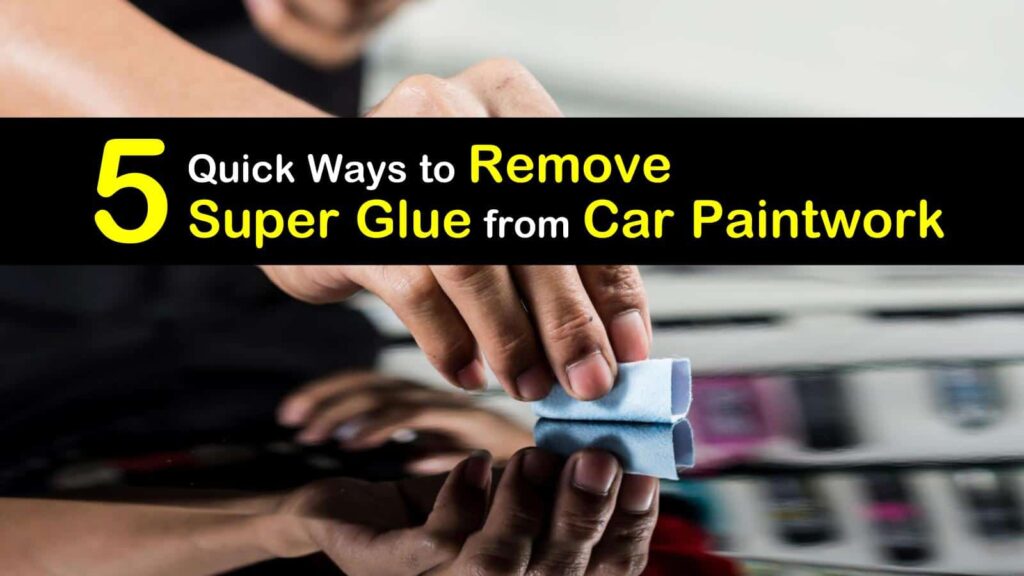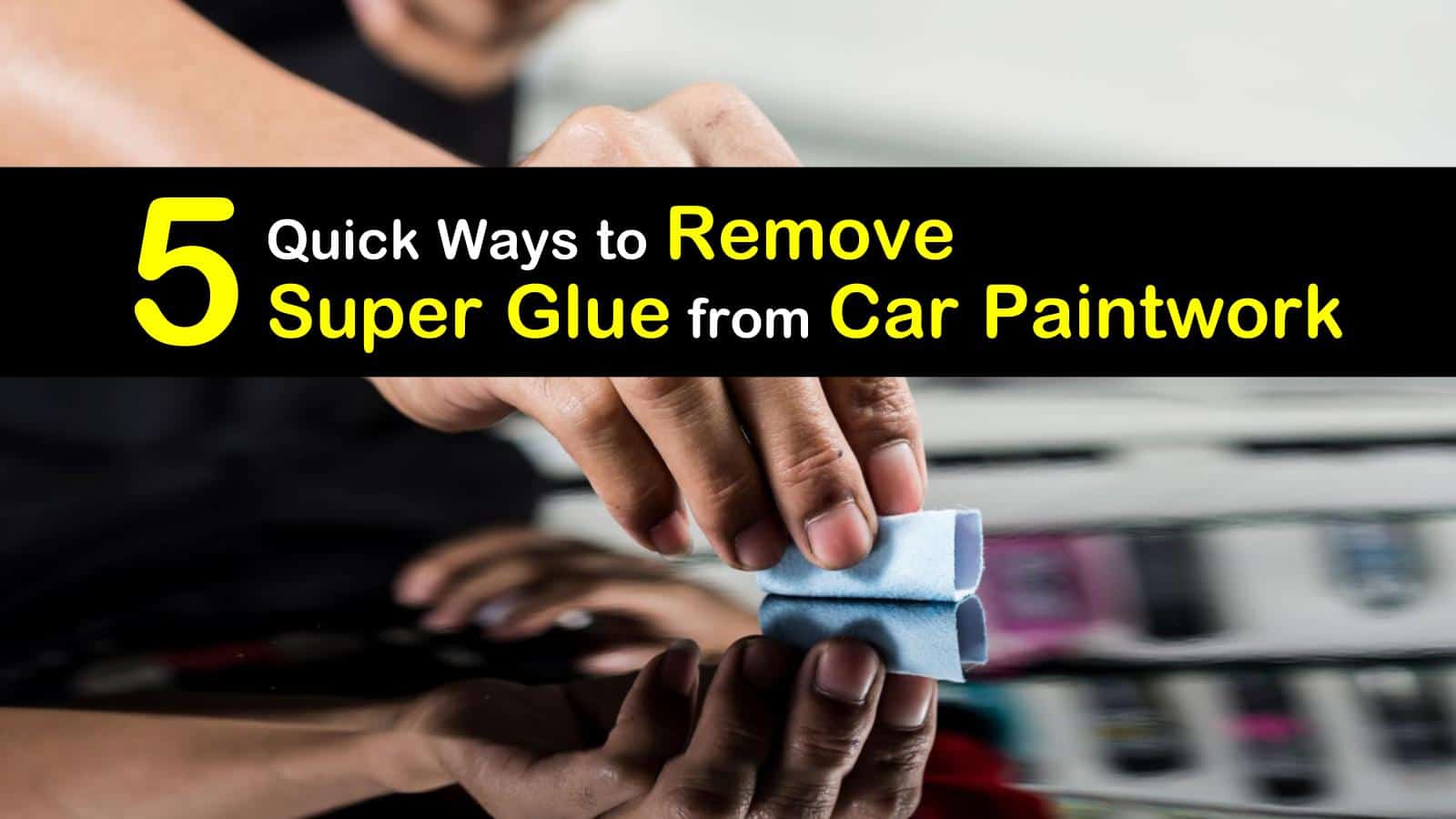
How to Remove Adhesive from Car Paint Without Damage: A Comprehensive Guide
Discovering unwanted adhesive residue on your car’s paint can be frustrating. Whether it’s from old bumper stickers, dealer decals, or accidental spills, knowing how to remove adhesive from car paint safely is crucial to preserving your vehicle’s appearance and value. This guide provides a comprehensive, step-by-step approach to effectively remove adhesive from car paint without causing scratches, swirls, or other damage. We’ll cover various methods, from gentle household solutions to specialized products, ensuring you can choose the best option for your specific situation.
Understanding the Challenge: Why Adhesive Removal Requires Care
Car paint consists of several layers, including a clear coat that protects the underlying color. This clear coat is relatively delicate and susceptible to damage from harsh chemicals, abrasive materials, and excessive force. When you attempt to remove adhesive from car paint, it’s essential to use methods that dissolve the adhesive without harming the clear coat. Improper techniques can lead to scratches, dullness, or even complete paint failure, resulting in costly repairs.
Essential Supplies for Safe Adhesive Removal
Before you begin, gather the necessary supplies. Having everything on hand will make the process smoother and more efficient. Here’s a list of items you’ll likely need:
- Microfiber Towels: These are soft, lint-free, and ideal for wiping and buffing without scratching the paint.
- Plastic Scraper: A plastic scraper is less likely to scratch the paint than a metal one.
- Heat Gun or Hair Dryer: Gentle heat can soften the adhesive, making it easier to remove.
- Adhesive Remover: Choose a product specifically designed for automotive use.
- Isopropyl Alcohol (Rubbing Alcohol): Can be effective for certain types of adhesive.
- WD-40: A multi-purpose lubricant that can help loosen adhesive bonds.
- Clay Bar: Useful for removing stubborn residue after the initial adhesive removal.
- Detailing Spray or Car Wax: To protect the paint after cleaning.
- Gloves: To protect your hands from chemicals.
Step-by-Step Guide: Removing Adhesive from Car Paint
Follow these steps carefully to remove adhesive from car paint safely and effectively:
Step 1: Preparation and Assessment
Start by washing the area around the adhesive with soap and water to remove any dirt or debris. This will prevent scratching during the removal process. Carefully examine the type of adhesive and the extent of the residue. This will help you determine the best approach.
Step 2: Applying Heat (Optional but Recommended)
Using a heat gun or hair dryer on a low setting, gently warm the adhesive. Hold the heat source several inches away from the paint and move it back and forth to avoid overheating. The heat will soften the adhesive, making it easier to lift. Be cautious not to overheat the paint, as this can cause damage. The goal is to soften the adhesive, not melt it.
Step 3: Applying an Adhesive Remover
Choose an adhesive remover specifically designed for automotive use. These products are formulated to dissolve adhesive without harming the paint. Apply the remover to a microfiber towel and gently dab it onto the adhesive residue. Allow the remover to dwell for the recommended time, usually a few minutes. Follow the manufacturer’s instructions carefully. Avoid spraying the remover directly onto the paint, as this can lead to overspray and potential damage.
Step 4: Gentle Scraping (If Necessary)
If the adhesive is stubborn, use a plastic scraper to gently lift the edges. Work slowly and carefully, applying light pressure. Avoid using metal scrapers or sharp objects, as these can easily scratch the paint. If the adhesive doesn’t lift easily, reapply the adhesive remover and allow it to dwell for a longer period. Patience is key to preventing damage.
Step 5: Wiping Away the Residue
Once you’ve lifted the adhesive, use a clean microfiber towel to wipe away the remaining residue. Apply gentle pressure and work in a circular motion. If there’s still some adhesive left, reapply the adhesive remover and repeat the wiping process. Continue until all the adhesive is removed.
Step 6: Cleaning with Isopropyl Alcohol (Optional)
If the adhesive remover leaves behind an oily residue, you can clean the area with isopropyl alcohol (rubbing alcohol). Apply the alcohol to a clean microfiber towel and gently wipe the area. This will remove any remaining residue and prepare the paint for polishing or waxing.
Step 7: Using a Clay Bar (For Stubborn Residue)
For particularly stubborn adhesive residue, a clay bar can be an effective solution. Clay bars are designed to remove contaminants from the paint’s surface, including adhesive residue. Follow the manufacturer’s instructions for using the clay bar, and be sure to use a clay bar lubricant to prevent scratching. [See also: How to Properly Use a Clay Bar on Your Car]
Step 8: Polishing the Paint (If Necessary)
In some cases, removing adhesive can leave behind slight imperfections in the paint, such as swirl marks or a dull appearance. If this occurs, you can use a polishing compound to restore the paint’s shine. Apply the polishing compound to a polishing pad and use a dual-action polisher to gently polish the affected area. Follow the manufacturer’s instructions for using the polishing compound and polisher. If you’re not comfortable using a polisher, you can also polish the paint by hand using a microfiber towel.
Step 9: Protecting the Paint
After removing the adhesive and polishing the paint (if necessary), it’s essential to protect the paint with a layer of wax or sealant. This will help to prevent future damage and keep your car looking its best. Apply the wax or sealant according to the manufacturer’s instructions. Regular waxing is a good practice to maintain your car’s paint finish. [See also: Best Car Waxes for Protecting Your Vehicle]
Alternative Methods for Removing Adhesive
While the above method is generally effective, here are some alternative approaches you can try:
- WD-40: Spray WD-40 onto the adhesive and let it soak for a few minutes. Then, wipe away the residue with a microfiber towel. WD-40 is a good option for removing sticky residue from decals and stickers.
- Peanut Butter: The oils in peanut butter can help to dissolve adhesive. Apply a thick layer of peanut butter to the adhesive and let it sit for 30 minutes. Then, wipe away the peanut butter and adhesive with a microfiber towel. Be sure to use creamy peanut butter, not chunky.
- Cooking Oil: Similar to peanut butter, cooking oil can help to dissolve adhesive. Apply cooking oil to the adhesive and let it sit for a few minutes. Then, wipe away the oil and adhesive with a microfiber towel.
Common Mistakes to Avoid When Removing Adhesive
To avoid damaging your car’s paint, be sure to avoid these common mistakes:
- Using Harsh Chemicals: Avoid using harsh chemicals like acetone or paint thinner, as these can damage the paint.
- Using Abrasive Materials: Avoid using abrasive materials like steel wool or scouring pads, as these can scratch the paint.
- Applying Excessive Force: Avoid applying excessive force when scraping or wiping the adhesive, as this can damage the paint.
- Overheating the Paint: Avoid overheating the paint with a heat gun or hair dryer, as this can cause damage.
Preventing Adhesive Buildup in the Future
While knowing how to remove adhesive from car paint is important, preventing adhesive buildup in the first place is even better. Here are some tips to help you avoid future adhesive problems:
- Use Removable Decals and Stickers: When applying decals or stickers to your car, choose products that are specifically designed to be removable. These products use adhesives that are less likely to leave behind residue.
- Apply Protective Film: Consider applying a clear protective film to your car’s paint in areas that are prone to adhesive buildup, such as the bumper or door panels. This film will protect the paint from damage and make it easier to remove adhesive.
- Regularly Clean Your Car: Regularly washing and waxing your car will help to prevent adhesive from bonding to the paint. This will make it easier to remove any adhesive that does accumulate.
Conclusion: Keeping Your Car’s Paint Pristine
Knowing how to remove adhesive from car paint safely is an essential skill for any car owner. By following the steps outlined in this guide and using the right tools and products, you can effectively remove adhesive from car paint without causing damage. Remember to be patient, work carefully, and avoid common mistakes. With a little effort, you can keep your car’s paint looking its best for years to come. If you are unsure about completing any of these steps, consult a professional detailer to remove adhesive from car paint.

